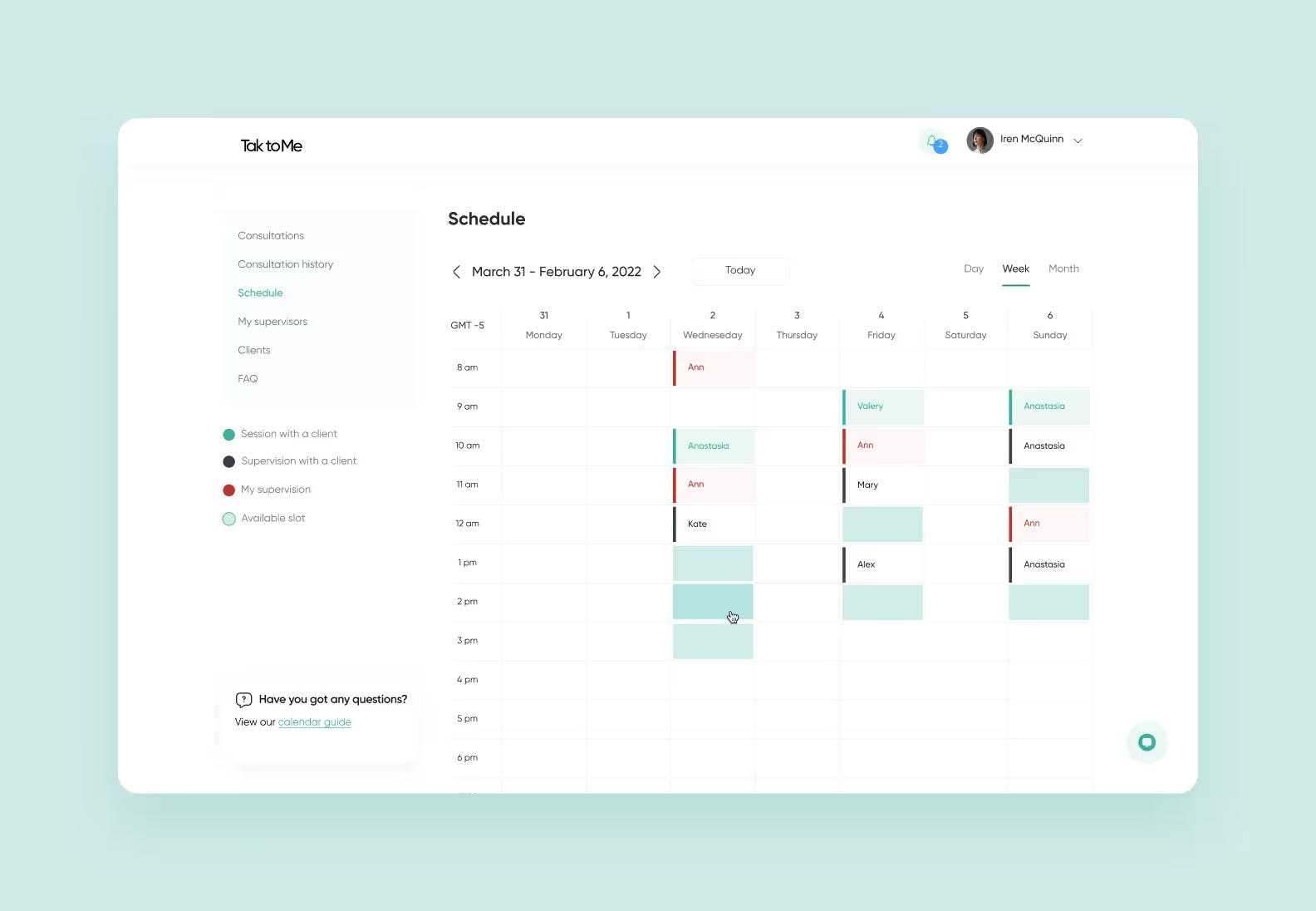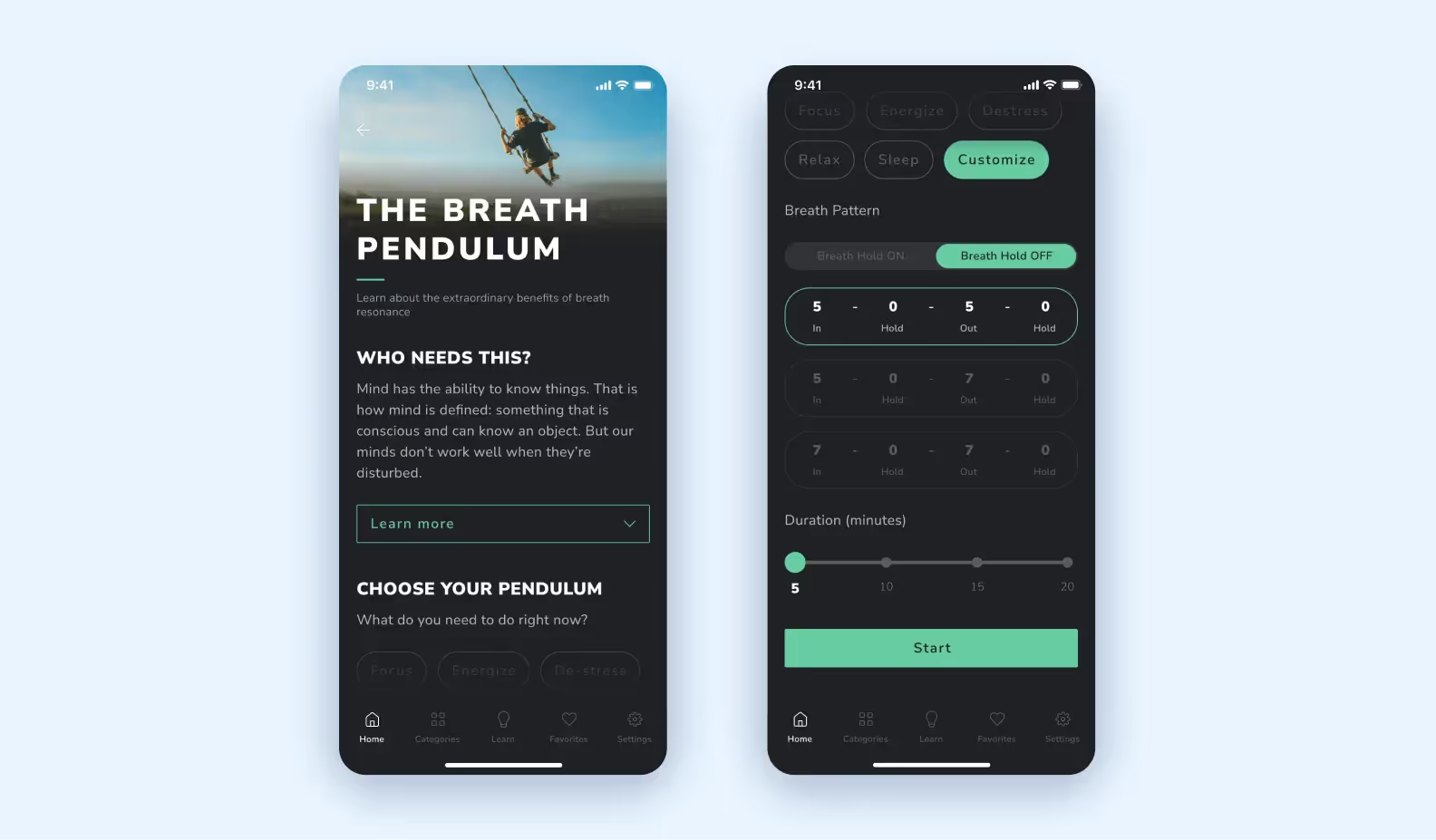


A patient with a sore throat doesn’t want to wait weeks for an appointment. A parent with a sick child doesn’t want to sit in traffic to see a doctor. Today, many of those first points of care happen online — through a screen rather than a waiting room.
For MedTech businesses, that shift means the website is no longer just a marketing tool; it is the clinic’s front desk, consultation room, and billing office all at once. Done right, telehealth website design translates directly into trust, efficiency, and patient loyalty. In this article, we’re looking at how exactly that happens and what UX/UI practices can help along the way.

In 2025, many people don’t see telehealth as an alternative, it’s often the first point of contact for patients. Here’s why website design matters today even more than ever.
According to Statista, there were 127.2 million users of online doctor consultations worldwide in 2025, and by 2029, the telehealth market is expected to cross the $10 billion benchmark.
With such a spike in healthcare services, it's only natural that people expect seamless digital experiences similar to e-commerce platforms: fast load times, intuitive navigation, and mobile-friendly layouts. A well-designed telehealth website helps meet these expectations, ensuring patients can book appointments, access medical records, and communicate with providers without friction.
Healthcare decisions rely heavily on trust. A dated or poorly structured website can undermine confidence before patients even schedule a consultation. Clean visuals, an accessible UI, and clear data security indicators build credibility and show users your clinic is modern, secure, and invested in delivering quality care.
Good design also helps you sell. Intuitive user flows and clear calls-to-action (like “Book Now” or “Start Consultation”) shorten the patient journey, improving conversion rates. Additionally, integrated forms, chatbots, and scheduling systems automate repetitive tasks, reducing administrative workload and letting staff focus on actual care.
It’s easy to throw the words “good design” around, but what does it mean exactly? We pinpointed 5 key UX/UI practices that illustrate it best.
Most patients use mobile devices to access telehealth services. A mobile-first approach ensures that interfaces adapt seamlessly to smaller screens — no pinching or zooming required. Prioritize large tappable buttons, simplified navigation, and fast loading times to keep mobile users engaged and reduce drop-offs.
You don’t always need to craft a new website from scratch just to fit in with these recommendations — sometimes, a website redesign is just enough to, let’s say, resuscitate your user experience 😉
Healthcare journeys can be stressful enough, and your platform shouldn’t add to the confusion. Map out user flows from registration to consultation and remove unnecessary steps. For example, let new users create an account right after booking their first appointment, instead of forcing a lengthy sign-up form upfront.
Patients should instantly understand where to click next. Apply a strong visual hierarchy: bold headlines, well-contrasted CTAs, and whitespace around critical elements like “Book Now” or “Join Video Call.” This reduces cognitive load and speeds up decision-making, especially for less tech-savvy users.
Like we said already, trust is non-negotiable in healthcare. Humanize your UI with real photos of providers, reassuring microcopy, and visible security cues like SSL badges or privacy notices. Subtle web design touches — such as warm color palettes and empathetic tone in text — can turn a cold interface into a supportive environment.
<div class="post_divider"></div>
⭐Our experience
When we developed Talk to Me, it was all about the balance between a laconic UI and unique aesthetics. Talk to Me is a web app for psychological consultations, and our task was to design a platform for video calls that would be convenient for both therapists and clients.
There was one catch: the visuals had already been developed by another agency, and we had to implement them into the concept.

We developed three roles: for clients, for therapists, and for businesses.
We removed all the unnecessary steps from the UI. Our logic was one screen = one big green button. That way, users immediately understand where to click and what’s the next step.
We also created a custom calendar for the platform — like Google, but for therapists.

The result:
<div class="post_divider"></div>
Last but not least: telehealth must be inclusive. Follow WCAG guidelines: provide high color contrast, add text alternatives to images, enable keyboard navigation, and offer captions during video calls. Accessibility doesn’t just protect you from legal risks — it expands your reach to older adults and people with disabilities.
Every telehealth platform is unique, but there are some key features you can’t throw away. Let’s look at four things everyone would expect from a good telemedicine website.
Let patients book, reschedule, or cancel appointments in just a few taps. A calendar-based interface with real-time availability reduces back-and-forth calls and keeps your staff’s workload light. For example, integrating a “Book Now” button directly on doctor profiles can speed up the decision process and boost conversions.
The “tele” part in “telehealth” is there for a reason: video calls are the heart of online healthcare, and they need to work flawlessly. Built-in HIPAA-compliant video functionality helps patients connect with providers without leaving the platform. Include simple pre-call tech checks (camera/mic tests) to minimize last-minute friction and missed sessions.

Centralized EHR access lets providers view patient history and update records during consultations. For patients, seeing lab results or prescriptions right in their dashboard adds transparency and trust. It also reduces administrative errors and keeps care consistent across multiple visits.
A quick question shouldn’t require a full appointment. Live chat or secure messaging lets patients reach out to care teams for minor issues or follow-ups. Adding an AI-powered chatbot for FAQs (like “How do I reset my password?”) can save staff time while still providing instant answers.
A high-performing telehealth website depends on the technology behind it, not just sleek design. It needs to have a reliable backend to handle traffic and keep data secure, a responsive frontend that works across devices, and much more. Here’s a table for better understanding of the tech stack and capabilities each layer brings to your telehealth website:

Both trust and engagement are important, but they cannot be achieved through visual appeal alone. Let’s look into how telehealth web design can help you with both and what exactly you need to take into consideration.
Trust starts through clarity and transparency. Patients need to instantly see who you are, what services you provide, and how their data is protected. Use clean layouts with minimal clutter, clear value propositions on the homepage, and visible security cues like SSL certificates, privacy policies, and HIPAA compliance badges.
Engagement is driven by usability and personalization. Simple navigation, intuitive appointment booking, and responsive design reduce friction and keep users moving through the platform. Adding personalized dashboards creates ongoing value, encouraging patients to return.
<div class="post_divider"></div>
⭐Our experience
MyTherapy Assistant is a service to find psychotherapists in the UK. Initially, the clients approached us for design services, but got a fully developed platform and a mobile app.
When we started to think on the design, we pointed out three ways that would help our clients’ service stand out:

For each role (patient, therapist, and admin), we developed a set of screens and functions. For example, the patient can monitor previous and upcoming sessions, keep all materials for therapy in one place, track therapy goals, chat with therapists, etc.
Therapists, in their turn, can see and organize their schedule, calendar, income, and patients.
Admins can look through registration requests, profiles, and patients’ data (which is a requirement of HIPAA and GDPR).
The result:
<div class="post_divider"></div>
Having completed over 500 projects in different niches, we have crafted our own process that helps us to deliver the most effective result. If you choose to work with us to develop your telehealth website, you may want to know more about our approach.
We don’t jump into design blindly. We start with product discovery to understand your business model, target audience, and market positioning. This lets us build not just a website, but a strategic digital product that supports your growth goals from day one.
We talk to your users, map their journeys, and identify pain points. That way, our designs aren’t just visually polished but grounded in empathy. This ensures patients get a frictionless experience, which directly improves engagement and retention for your platform.
<div class="post_divider"></div>
⭐Our experience
We worked on Breath Method — an app for breathing exercises and a competitor for Headspace.
Amid the COVID-19 pandemic, there was (and still is) a spike in mental health apps. Here’s how Breath Method stood out:
For design, we chose gray concrete and lush green and used images with natural patterns of water, plants, and rocks. When it came to content, we included three types at the MVP stage: breath-related articles, the client’s own audio and video lessons on breathing techniques, and breathing exercises.
The audio lessons were split into several playlists, each one targeting a certain life issue: lack of sleep, anxiety, stress, etc. We also developed a so-called “Pendulum” mode — a builder that allows customizing practices for the users’ needs.

We also implemented sign-up with both Face ID and Touch ID.
The result:
<div class="post_divider"></div>
Speed matters when you’re entering a competitive market. We build clickable prototypes early, test them quickly, and refine them in short cycles. This approach saves time and budget while giving you clear visibility into the product as it evolves.
To ensure patients’ trust, our developers bake in HIPAA-compliant data handling, secure authentication, and robust privacy protection from the start, so you can launch without legal headaches or security risks.
We deliver production-ready code, detailed documentation, and post-launch support. We don’t just want to build a platform for you — we want to keep it running smoothly and scaling effortlessly as your user base grows.
In different web design agencies, the price for telehealth website design can vary: it depends not only on price tags, but also on your project’s specification. If you choose to work with us, we’ll be able to give you a detailed price breakdown for your project after a consultation. But here’s an estimated timeline and cost for telehealth website design:
For MedTech businesses, design is the driver of trust, engagement, and growth. Each design decision — button placement, loading speed, onboarding flow — has a measurable business impact.
➡️If you’re planning to launch or scale a telehealth platform, the fastest way forward is working with a team that understands both the user journey and the technical demands of healthcare. That’s where we come in. <a class="blog-modal_opener">Let’s design and build</a> your telehealth platform the right way — secure, patient-friendly, and ready to grow.